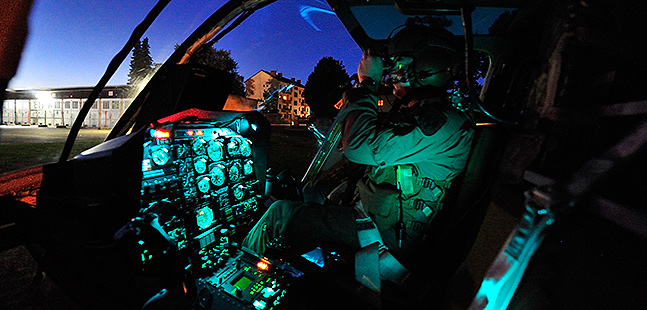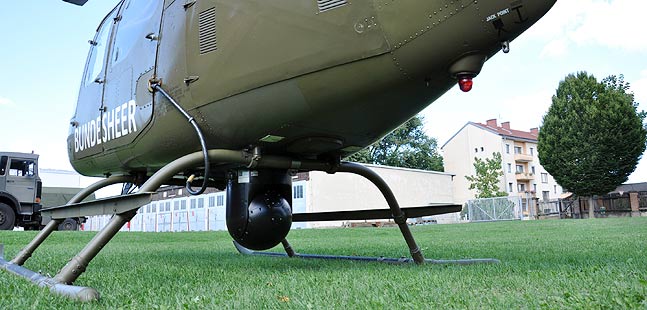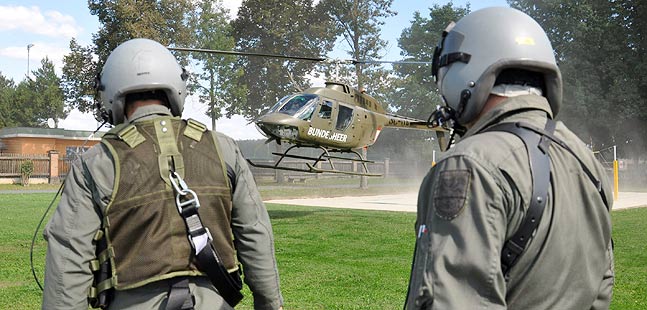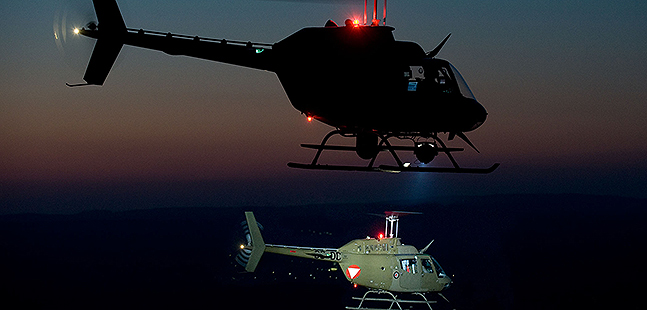Air Reconnaissance: These Men Keep Track
At this moment in time with the refugee crisis, Warrant Officer III Jürgen Beyrer is able to get an oversight of the situation from the helicopter. Whilst in the air he can see for kilometers across the Austrian border - even when it is pitch black he can see up to 5 kilometers with his night vision device.
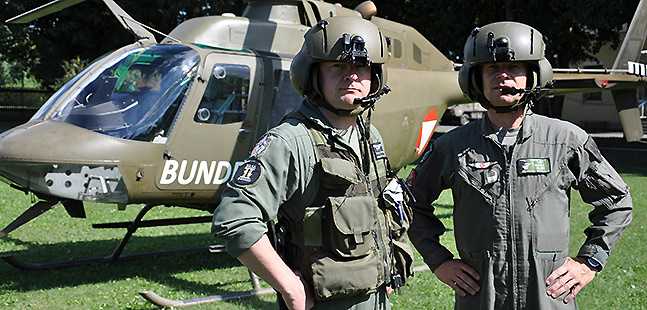
Pilot Jürgen Beyrer (l.) and flight technician Rudolf Klein in front of their OH-58 "Kiowa" helicopter.
Beyrer is a pilot of an OH-58 "Kiowa" helicopter and is presently stationed with 14 comrades at the South Styrian Straß. From there he flies at the command of the Ministry of Interior, to support the police and soldiers on the ground with information. He is therefore equipped with night vision goggles and a "Forward Looking Infra-Red" (FLIR)-night vision device.
Beyrer: "The goggles are needed for us pilots when flying in dim light. The operator who sits at the back of the helicopter observes the ground beneath through the FLIR."
Operating at the Styrian Border
"Generally, we monitor the Styrian border. In the meantime, there are two more helicopters stationed in Burgenland and in Kärnten", says the 39 year old from Lower Austria. He is with this operation for 6 days at any one time and helps to coordinate the work of his colleagues on the ground. Then he goes back to the air base for 6 days in Langenlebarn, "otherwise, flying the helicopter for longer periods would put too much strain on us."
Taking-off and Landing in the Barracks
Since 18th September 2015 the soldiers from the air support unit are housed in Straß. Their helicopters take-off and land within the compound of the barracks. From there, Austria's border is nearby and the helicopter can reach it within 5 minutes.
Beyrer: "Our fellow soldiers from the 17th infantry battalion are dedicated to assisting us by providing food and accommodation."
Air-Reconnaissance Teams and IT Specialists
In addition to the flight crews, air reconnaissance experts have also come to Styria. They produce aerial photos and videos, which they then evaluate. Their reconnaissance results are passed on to the ground units. A signals unit provides the required IT connections and satellite communication.
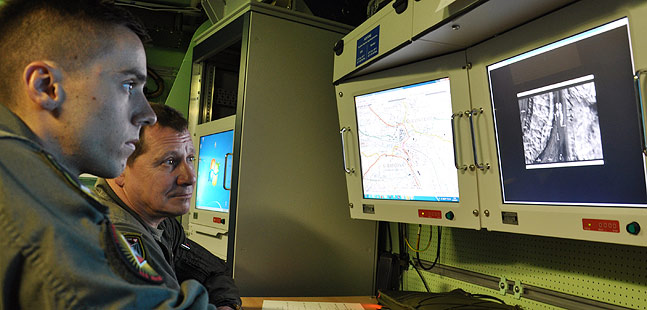
2nd lieutenant Gernot Herbst (l.) and Warrant Officer III Franz Zubek evaluate reconnaissance results.
3 to 5 Hours of Flight Time per Shift
The crews change shifts following strict guidelines. Beyrer: "The day-time crew flies the helicopter from sunrise until sunset which is currently around 19.30. Then the night crew takes over. Per shift, the pilots complete two flights, so altogether, their flight time would be between 3 and 5 hours."

